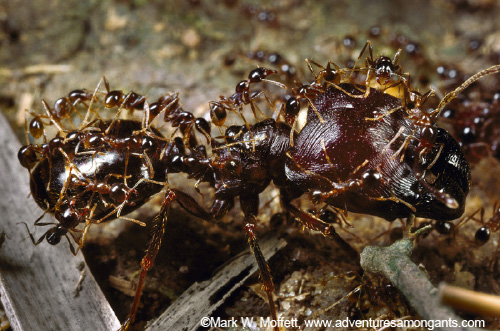Hello All!
I have been here a while reading and watching, but I feel a proper Introduction is in order. I am James from Nebraska, USA. I love ants, but have failed at keeping my own, probably from operator error. Joining this community to get all the support I can get being that I can use all the help I can get! Anyways, I am glad to be here and glad to have so many informative experts at my fingertips to receive pointers along my journey!
Ant Species I want to keep
You may have expected a long list here, but not really. I love many ant species, but not many interest me here in Nebraska.
- Camponotus pennsylvanicus
I want this species because it is a night worker, is large, are polymorphic, and seems to be pretty hardy! I have attempted and failed many times to retrieve and make these ants thrive! So any assistance as to where to look, how to keep, and what to feed would be welcomed even though I have a good idea, and have done a lot of research more will not hurt! I wish I could have trap jaw or Solenopsis, but neither are found in my city.
Ant Species in my Area
- Aphaenogaster fulva
- Aphaenogaster rudis
- Aphaenogaster tennesseensis
- Aphaenogaster treatae
- Brachymyrmex depilis
- Camponotus americanus
- Camponotus caryae
- Camponotus chromaiodes
- Camponotus decipiens
- Camponotus discolor
- Camponotus nearcticus
- Camponotus novaeboracensis
- Camponotus pennsylvanicus
- Camponotus sayi
- Camponotus vicinus
- Crematogaster cerasi
- Crematogaster lineolata
- Crematogaster missouriensis
- Dorymyrmex flavus
- Dorymyrmex insanus
- Dorymyrmex pyramicus
- Dorymyrmex smithi
- Forelius pruinosus
- Formica argentea
- Formica bradleyi
- Formica comata
- Formica dakotensis
- Formica densiventris
- Formica dolosa
- Formica fossaceps
- Formica fusca
- Formica incerta
- Formica integra
- Formica integroides
- Formica lasioides
- Formica limata
- Formica montana
- Formica neoclara
- Formica neogagates
- Formica neorufibarbis
- Formica obscuripes
- Formica obtusopilosa
- Formica oreas
- Formica pallidefulva
- Formica pergandei
- Formica podzolica
- Formica puberula
- Formica ravida
- Formica rubicunda
- Formica subaenescens
- Formica subsericea
- Formica vinculans
- Hypoponera opacior
- Lasius alienus
- Lasius claviger
- Lasius flavus
- Lasius interjectus
- Lasius latipes
- Lasius murphyi
- Lasius nearcticus
- Lasius neoniger
- Lasius niger
- Lasius occidentalis
- Lasius umbratus
- Monomorium minimum
- Myrmecina americana
- Myrmica americana
- Myrmica brevispinosa
- Myrmica fracticornis
- Myrmica punctiventris
- Neivamyrmex kiowapache
- Neivamyrmex nigrescens
- Nylanderia arenivaga
- Nylanderia parvula
- Nylanderia terricola
- Pheidole bicarinata
- Pheidole inquilina
- Pheidole pilifera
- Pogonomyrmex occidentalis
- Polyergus bicolor
- Polyergus breviceps
- Polyergus montivagus
- Ponera pennsylvanica
- Prenolepis imparis
- Solenopsis molesta
- Stenamma brevicorne
- Stenamma diecki
- Tapinoma sessile
- Temnothorax ambiguus
- Temnothorax curvispinosus
- Temnothorax pergandei
- Temnothorax schaumii
- Temnothorax tricarinatus
- More or Less * THANKS CANADIAN ANTER*
Edited by antking117, March 23 2017 - 10:19 PM.






















